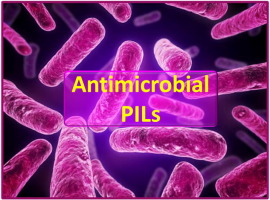当前位置:
X-MOL 学术
›
Eur. Polym. J.
›
论文详情
Our official English website, www.x-mol.net, welcomes your
feedback! (Note: you will need to create a separate account there.)
POLY(IONIC LIQUID)S AS ANTIMICROBIAL MATERIALS
European Polymer Journal ( IF 5.8 ) Pub Date : 2018-08-01 , DOI: 10.1016/j.eurpolymj.2018.05.027 Alexandra Muñoz-Bonilla , Marta Fernández-García
European Polymer Journal ( IF 5.8 ) Pub Date : 2018-08-01 , DOI: 10.1016/j.eurpolymj.2018.05.027 Alexandra Muñoz-Bonilla , Marta Fernández-García

|
Abstract In the last few years, efforts to broaden PILs properties, structures, functionalities, and applications have grown rapidly. One of their interesting potential uses is as antimicrobial systems, due to their versatility and capacity to be adjusted in different morphologies, sizes, and surface charges. This review gathers the recent advances in antimicrobial materials based on PILs. Initially, the synthesis of PILs with antimicrobial activity, showing the influence of the chemical structure, whether is cationic or anionic and their corresponding counter-ions, is pointed out. Equally, most of these PILs present modest mechanical performance that turn researchers to overcome it by grafting them to different surfaces, crosslinked with other monomers or by simple blending with polymers. Moreover, the nature of PILs makes them regulators of size and shape of inorganic antimicrobial particles, enhancing their effectivity.
中文翻译:

作为抗微生物材料的聚(离子液体)S
摘要 在过去的几年中,拓宽 PILs 特性、结构、功能和应用的努力迅速增长。它们有趣的潜在用途之一是作为抗菌系统,因为它们的多功能性和在不同形态、尺寸和表面电荷中进行调整的能力。本综述收集了基于 PIL 的抗菌材料的最新进展。最初,指出了具有抗菌活性的 PILs 的合成,显示了化学结构的影响,无论是阳离子还是阴离子及其相应的反离子。同样,这些 PIL 中的大多数都表现出适度的机械性能,这促使研究人员通过将它们接枝到不同的表面、与其他单体交联或与聚合物简单混合来克服它。而且,
更新日期:2018-08-01
中文翻译:

作为抗微生物材料的聚(离子液体)S
摘要 在过去的几年中,拓宽 PILs 特性、结构、功能和应用的努力迅速增长。它们有趣的潜在用途之一是作为抗菌系统,因为它们的多功能性和在不同形态、尺寸和表面电荷中进行调整的能力。本综述收集了基于 PIL 的抗菌材料的最新进展。最初,指出了具有抗菌活性的 PILs 的合成,显示了化学结构的影响,无论是阳离子还是阴离子及其相应的反离子。同样,这些 PIL 中的大多数都表现出适度的机械性能,这促使研究人员通过将它们接枝到不同的表面、与其他单体交联或与聚合物简单混合来克服它。而且,











































 京公网安备 11010802027423号
京公网安备 11010802027423号